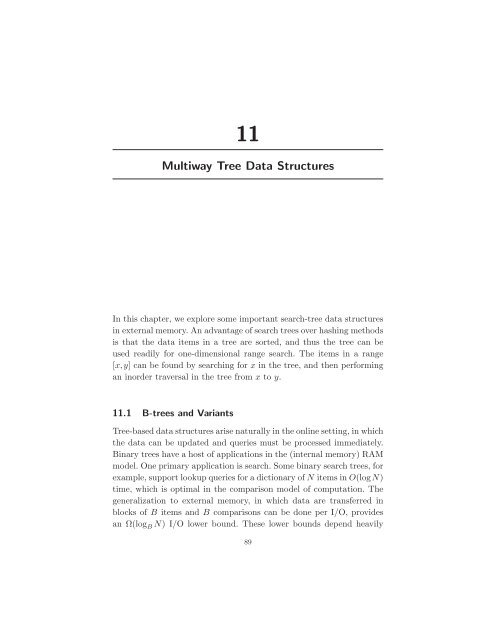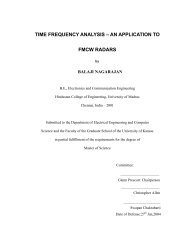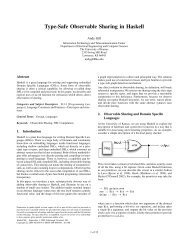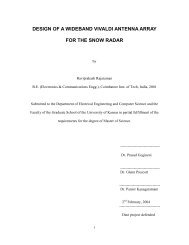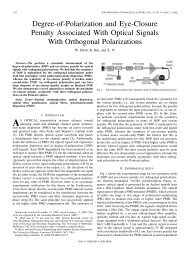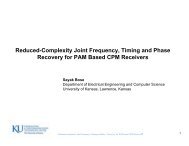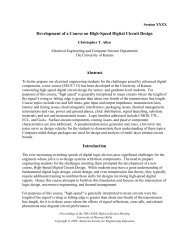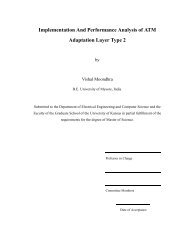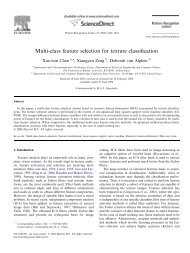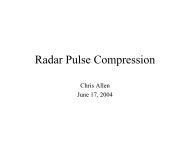Algorithms and Data Structures for External Memory
Algorithms and Data Structures for External Memory
Algorithms and Data Structures for External Memory
You also want an ePaper? Increase the reach of your titles
YUMPU automatically turns print PDFs into web optimized ePapers that Google loves.
11<br />
Multiway Tree <strong>Data</strong> <strong>Structures</strong><br />
In this chapter, we explore some important search-tree data structures<br />
in external memory. An advantage of search trees over hashing methods<br />
is that the data items in a tree are sorted, <strong>and</strong> thus the tree can be<br />
used readily <strong>for</strong> one-dimensional range search. The items in a range<br />
[x,y] can be found by searching <strong>for</strong> x in the tree, <strong>and</strong> then per<strong>for</strong>ming<br />
an inorder traversal in the tree from x to y.<br />
11.1 B-trees <strong>and</strong> Variants<br />
Tree-based data structures arise naturally in the online setting, in which<br />
the data can be updated <strong>and</strong> queries must be processed immediately.<br />
Binary trees have a host of applications in the (internal memory) RAM<br />
model. One primary application is search. Some binary search trees, <strong>for</strong><br />
example, support lookup queries <strong>for</strong> a dictionary of N items in O(logN)<br />
time, which is optimal in the comparison model of computation. The<br />
generalization to external memory, in which data are transferred in<br />
blocks of B items <strong>and</strong> B comparisons can be done per I/O, provides<br />
an Ω(log B N) I/O lower bound. These lower bounds depend heavily<br />
89


